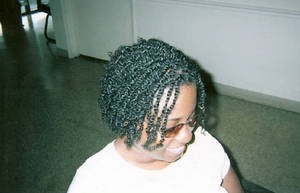Anorexia nervosa was first described more than 300 years ago, in 1689, by Richard Morton as a condition of ‘a nervous consumption’ caused by ‘sadness and anxious cares’.[i] Today, this medical condition describes an eating disorder characterized by extremely low weight, a distorted body image, and an intense fear of gaining weight. Statistically, 90-95% of the people presenting for treatment are women, with the majority being Caucasian, found in the middle to upper-middle class. Anorexia nervosa has the highest mortality rate of any psychological disorder, with up to 20% dying as a result of their disorder, half of which are suicide-related deaths. Specifically, there are two subtypes of this disorder: the restrictingtype, where individuals simply limit calorie intake, and the binge-eating-purgingtype, where people constantly purge themselves. [ii] Interestingly enough, most people have a premorbid description of being well-liked by their peers, possessing athletic skills and having average to above average intelligence. This leads to the question: how does one go from such desirable personal qualities to such a scorned and dangerous disease? The answer could stem from the fact that most people diagnosed also tend to be over-achieving, obsessive and dependent, but further exploration must be conducted into the origin, or etiology, of this disease.
The cause of anorexia nervosa should not and cannot be limited to a one-dimensional view; instead, a multidimensional or integrative model must be utilized, which includes the following elements: biological, psychological, social and developmental influences. Biological refers primarily to genetics, neurotransmitters and drugs, while psychological comprises emotions, behaviors, and cognitive functions. Furthermore, social influences consists of relationships, gender roles and culture, and developmental covers reactions at different ages. In addition to these four broad areas of influence, important consideration must be given to external environmental factors and stressors.
Biological
Like many psychological disorders, eating disorders run in the family, meaning there is most likely a genetic component. Relatives of patients with anorexia nervosa are approximately 5 times more likely than the general population to develop the disorder themselves. It is becoming more and more agreed upon that genetic makeup is about half of the equation among causes of anorexia.ii A strong theory is the idea that individuals with eating disorders inherit biological vulnerabilities, such as poor impulse control, making them more susceptible to stressful life events. Consequently, they might eat impulsively in an attempt to relieve their stress and anxiety.[iii]This theory is an example of the diathesis-stress model, which basically explains that individuals inherit behavioral tendencies, which may be activated by certain stressors. Moreover, in the neuroendocrine branch, a substantial number of abnormalities of hormone regulation have been described in patients with anorexia nervosa. One hypothesis postulates that hypothalamic abnormalities (which include neurotransmitter disturbances) are a primary cause of dysfunctional eating and neuroendocrine dysregulation in anorexia.[iv] Regardless, biological influences are not the only causes of anorexia nervosa.
Psychological
First off, biases in thinking and perception assist in preserving or contributing to the risk of developing anorexia nervosa. Anorexic eating behavior is believed to derive from feelings of corpulence and ugliness and is maintained by a variety of cognitive prejudices that change how the affected individual assesses and thinks about their body, food and eating. Additionally, people with anorexia tend to over-estimate the size or obesity of their own bodies. Keeping in line with psychological influences, those with anorexia also have poor cognitive flexibility, the ability to modify past patterns of thinking, which can hinder their ability to accept their weight-loss problem.[v] This disorder can even be portrayed in terms of positive and negative reinforcement. Anorexia nervosa is conceptualized as a learned behavior upheld by positive reinforcement. The individual employs extreme dieting to lose weight and, consequently, is reinforced by peers and the public. On the contrary, being overweight receives negative reinforcement, condemnation, and sometimes derision. Reinforcement for weight loss can become so compelling that the individual maintains the anorexic behavior in spite of threats to fitness and well-being.[vi] Although reinforcement ultimately affects the psychological dimension of this disorder, it initially develops from societal influences.
Social
The most prominent of all social influences is the one most people target for causing anorexia nervosa: the media. From books and magazines providing tips on calorie counting, to television and movies giving the idea that skinniness is associated with sexual appeal, to the fashion industry promoting slimness, the media can negatively affect people’s self-image. Becoming increasingly evident during the second half of the 20th century, the visions of the beauty ideal have shifted toward a progressively more slender image, especially in the Western world. However, the typical female has undergone increases in weight.[vii] This discrepancy between actual weight and socially acceptable weight ideals generates a susceptibility to body dissatisfaction, loss of control, and self-loathing, which can eventually lead to eating disorders. Aside from societal influences, there is a “closer-to-home” pressure that is just as powerful, if not more so, than the media: family. One experiment investigating familial contributions to the progression of anorexia explains the family’s importance: “As a mediator of culture, the family operates as a formidable influence on identity, contributing to the development of the self and the formation of self-image.”[viii] The main findings of this research convey the fact that media and family influences are not distinct; rather the family fosters the media’s negative body image. Besides societal manipulations, family also plays a crucial role in the developmental influences of a child’s advancement of anorexia nervosa.
Developmental
The onset of anorexia is usually in the teenage years, around the ages of 13-15. These are vulnerable years for young girls especially, who have a strong connection with their families, most importantly with their mothers. Mothers of girls with eating disorders seem to act as society’s envoys in wishing for their daughters to be skinny.ii They are usually prone to diets themselves, and normally, are more perfectionist than comparison moms. Because these early teenage years are so tumultuous, full of sexual development, weight gain and other bodily changes, it leaves young people vulnerable to a variety of psychological disorders. Comorbidity with anorexia includes clinical depression, obsessive compulsive disorder, substance abuse and personality disorders.[ix] These additional disorders make sense within the context of anorexia nervosa since people can certainly become depressed about their weight, thus potentially leading to substance abuse, they can (and do) become obsessed with losing weight, and they can also develop disorders with their persona from the abundant stress associated with anorexia. In brief, anorexia nervosa can lead to much more than an eating disorder, characteristically developing in the early years of a child’s life.
This multidimensional approach to determining the etiology of anorexia nervosa encompasses essentially every dynamic for the development of this dangerous disorder. Biological, psychological, social and developmental influences, coupled with environmental stressors, lead to the surfacing of this primarily Westernized disease. By studying the origins of this disorder, it is possible to understand it, and thus determine techniques to prevent or treat it.
[i]Levey, Robert. (2009). Anorexia Nervosa. Retrieved March 20, 2009, fromEmedicine from WebMD by Medscape Web site: http://emedicine.medscape.com/article/286063-overview
[ii] Barlow, David H. and Durand, V. Mark. (2005). Abnormal Psychology: An Integrative Approach. Wadsworth Cengage Learning. Pp. 268-269.
[iii]Women Bing to Relieve Stress. (2005). Retrieved on March 28, 2009, from USA Today. Web site: http://findarticles.com/p/articles/mi_m1272/is_2719_133/ai_n13560369/
[iv] Golden, Neville. (1984). An Overview of the Etiology, Diagnosis, and Management of Anorexia Nervosa. Retrieved on March 31, 2009, from Sage Publications. Web site: http://cpj.sagepub.com
[v] Tchanturia, Kate, Morris, Robin G. and Collier, David A. (2004). Cognitive Flexibility in Anorexia Nervosa and Bulimia Nervosa. 10(4), 513-520. Retrieved from Cambridge University Press.
[vi]Anorexia Nervosa. (2009). Retrieved April 1, 2009, from The American Dental Hygienists’ Association. Web site: http://www.adha.org/CE_courses/course8/anorexia_nervosa.htm
[vii] Truong, Khoa Dang and Sturm, Roland. (2005). Weight Gain Trends Across Sociodemographic Groups in the United States. 95(9), 1602-1606. Retrieved from the American Journal of Public Health.
[viii] Haworth-Hoeppner, Susan. (2000). The Critical Shapes of Body Image: The Role of Culture and Family in the Production of Eating Disorders. Pp. 212-227. Retrieved from National Council on Family Relations.
[ix] Crow, Scott and Peterson, Carol B. (2009). Refining Treatments for Eating Disorders. Pp. 266. Retrieved from The American Journal of PsychiatryResearch Library.




